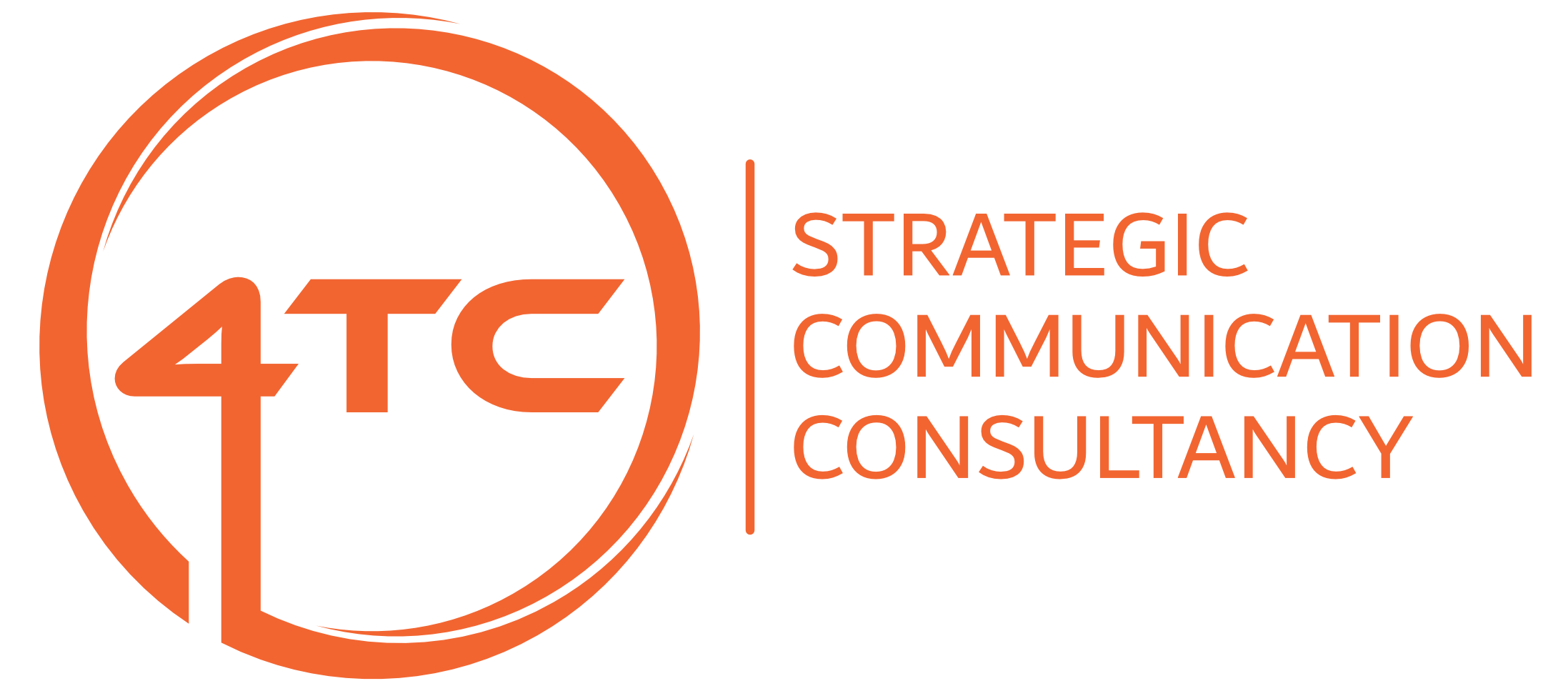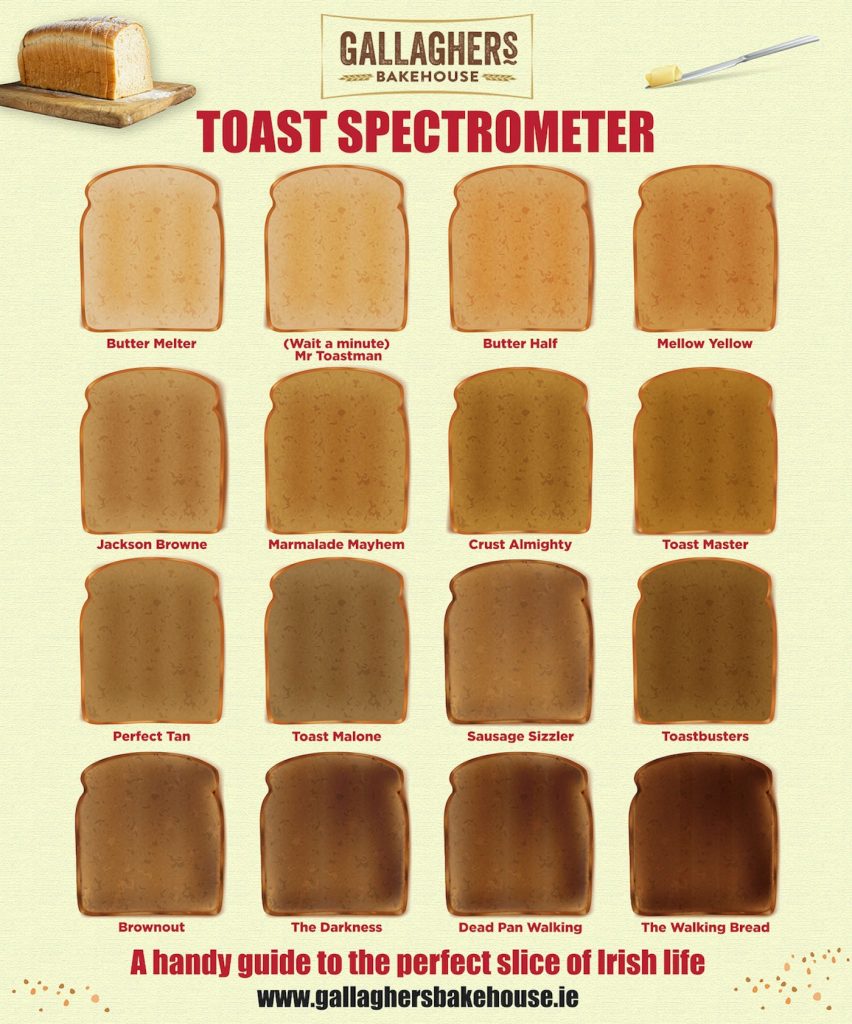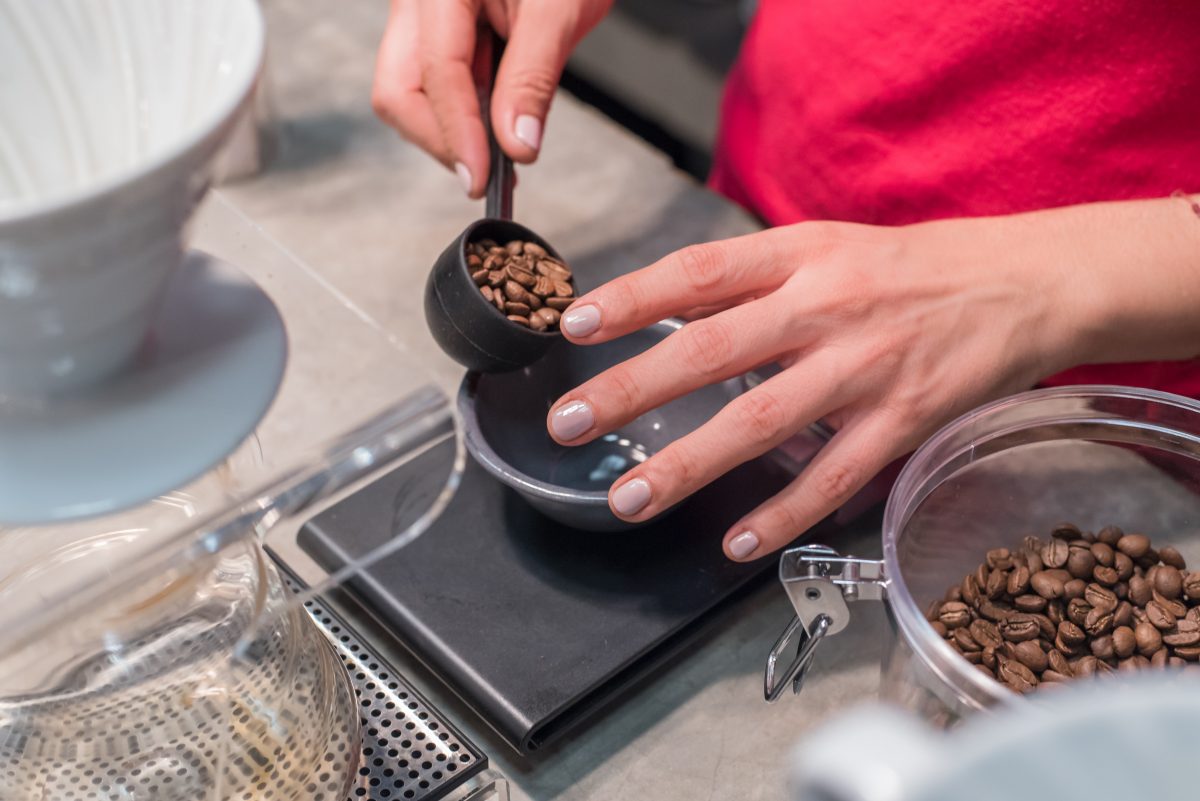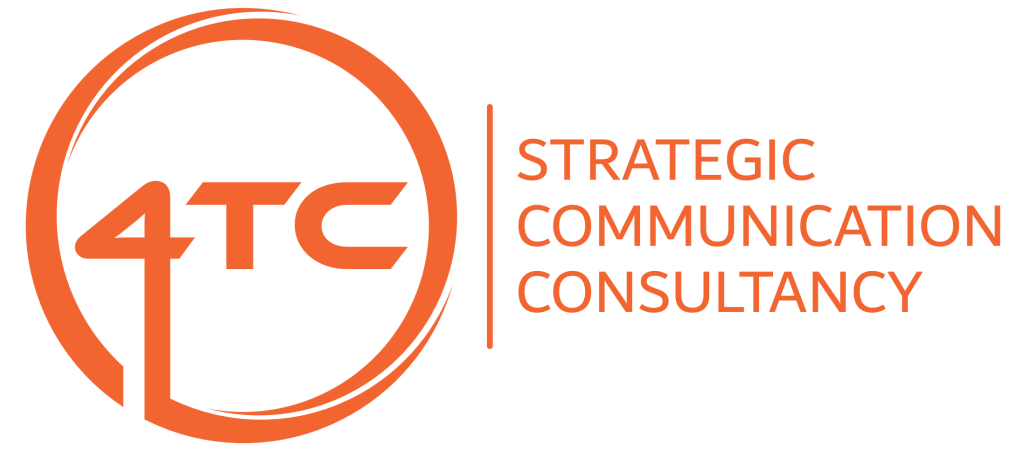CRUMBS IN THE BED? THEY DON’T BOTHER IRISH TOAST EATERS
Gallagher’s Bakehouse investigates Irish Toasting Habits
Gallagher’s Bakehouse investigates Irish Toasting Habits
-
- More than half of us love toast in bed – but 45% eat it ‘on the go’
- Butter the top topping – but 29% also like avocado, cream cheese or Marmite
- Toast Spectrometer allows consumers to chart their toasting preferences*
To help consumers get to know their toasting preferences better, Gallagher’s Bakehouse has created its own Toast Spectrometer which identifies the 16 different stages of toast – ranging from ‘Butter Melter’ to ‘The Walking Bread’.
#ToastSpectrometer
Almost half of Irish people eat their toast on the go – in their car, on public transport or even on a bike – but even more of us believe bed is the best place to savour a generously buttered slice for breakfast.
These are among the findings of a new Irish Toasting Habits survey undertaken to mark the launch of the Gallagher’s Bakehouse range of sourdough breads, baps and rolls.
Research showed that 24% of people associate sourdough bread with ‘toastability’, Donegal-based Gallagher’s Bakery found as it set out to uncover just what Ireland’s toasting habits are, as this most unusual of years draws to an end.
The responses from the 1,000 people surveyed suggest that the Irish are a traditional bunch when it comes to toast and where, when and with what they eat it – however, the survey also threw up a few surprises.
Bed is best
We all know crumbs in the bed are a bit itchy, but – let’s face it – it’s where we’d eat toast if we had a choice and more than half of people would agree with us – even if they do consider it to be the ‘strangest place’ they’ve ever eaten toast. (As far as we’re concerned, strange is the 1% of respondents claiming to have eaten toast on a private jet.)
A whopping 79% of people say they eat toast for breakfast – a figure which rises to 85% for those aged over 55. However, 25% see toast a mid-morning snack, while one in five has toast before bed (it’s those crumbs again), and 12% favour a toasty midnight snack.
Looking at toppings, nearly 80% of respondents would go for the tried-and-trusted butter option, with jam coming in at 38%, followed by marmalade at 30%. Smashed avocado on toast might be trendy but it only tempts 10% of Irish toast lovers. It came just behind cream cheese, on 13%, while the English favourite Marmite was favoured by only 6% of respondents.
Mary Horkan, Marketing Manager, Gallagher’s Bakehouse, thinks that it’s the traditional nature of a piece of toast (just maybe combined with the tradition of sourdough[1]) that drives traditional behaviours around eating it.
“The Gallagher’s Bakehouse Toast Habits Research[2] demonstrates an entrenched traditionality amongst Irish Toast Eaters, to the point where having a quick slice in bed is seen as the ‘strangest place’ that they’re ever eaten it.
“Luckily, we can point to the truly strange 15% who’ve had their toast in the bathroom and the absolutely-out-there 2% who’ve crunched a crust in a whirlpool spa.
“Similarly, butter, jam and marmalade achieved high scores when we asked what people put on their toast – and therefore it’s a refreshing to see 10% spreading an avocado, middle-eastern style, and 2% running with the southern Spanish staple of olive oil and garlic. We’ve even made a contribution to the Marmite debate – only 6% would put it on their toast, which would seem to imply that it’s hate it, not love it.
“Turning to sourdough bread itself – the oldest form of leavened bread, with a tradition stretching back thousands of years – we found that all the things we’re saying about our new Gallagher’s Bakehouse range were echoed by our research. Great taste was a quality associated with sourdough by nearly 50% of people, ‘good for gut health’ by 36%, and suitable for eating anytime by 33%.
“We launched the new Gallagher’s Bakehouse sourdough range hoping to change the way people think about bread. It looks very much as if we’re pushing against an open door.”
The new Gallagher’s Bakehouse range consists of sliced family-sized and smaller-sized Rustic White, Wholemeal and Multigrain family breads, bloomers, baps, gourmet brioche burger buns, and a new handcrafted healthy range of Digestive Boost, Vitamin Boost, and Spelt & Oats loaves. The full range is on shelf in shops now.
Gallagher’s Bakery has a track record of innovation in the retail bakery sector. Sister brand, Promise Gluten Free brand has become the No1 gluten free bakery brand in Ireland since its re-launch in 2019, while also successfully launching the brand in international markets.
About Gallagher’s Bakery
Gallagher’s Bakery was set up as a local, family-run bakery business in Donegal in 1968. Its products are stocked in almost 1,000 stores in Donegal, Connacht and across Northern Ireland. Gallagher’s Bakery has a track record of innovation in the retail bakery sector. The company has successfully built its Promise Gluten Free brand into the No1 gluten free bakery brand in Ireland since its re-launch it in 2019, while also becoming a global player in that market in the UK and Canada. The company is now turning its attention to shaking up the mainstream packaged bread category, with a range of innovative handcrafted sourdough breads, baps and rolls.
Full information about the Gallagher’s Bakehouse range can be found at https://gallaghersbakehouse.ie.






